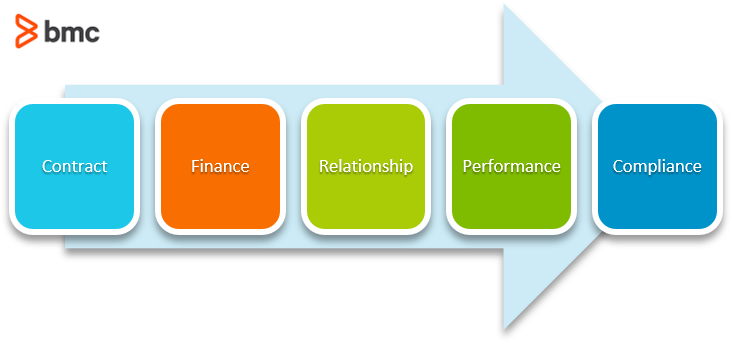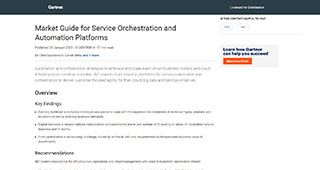In today’s digital age, one distinct element that determines an organization’s competitive edge is the quality of services provided by vendors within its value chain activities. Consider estimates from Gartner that companies will spend $474 billion on cloud services in 2022—just one example of how vendors are becoming critical in digital service delivery.
The management of the supplier ecosystem is a critical success factor for any enterprise, as customer experience and satisfaction are largely determined by vendor-supported touchpoints and interactions. And with enterprises sourcing a variety of services from multiple vendors, having an approach to coordinate them effectively is fast becoming an invaluable capability.
Enter the vendor management office (VMO), a cross-functional business unit responsible for the implementation of an enterprises’ vendor strategy with a view of providing visibility across the value chain. The VMO provides value to the organization through lowered operational costs, eliminating duplication of resources and strengthening relationships with these key partners in the service delivery journey.
Let’s consider how the VMO does this.
What is Vendor Management?
A vendor—or supplier, or seller—is an organization that contributes goods or services to another organization within a supply chain. According to Gartner, vendor management helps organizations “control costs, drive service excellence and mitigate risks”, all in pursuit of increasing value and return on investment.
Effective vendor management ensures that the organization’s vendors and their performances are managed appropriately to support the seamless provision of quality products and services. According to ITIL® 4, vendor management activities involve:
- Establishing a common approach to sourcing strategy and management of vendor relationships
- Maintaining a single point of control over active and planned vendor contracts and services
Depending on the organization, vendor management can be positioned as a strategic, tactical, or operational capability:
At the operational level, vendor management activities are simply an extension of the enterprise’s procurement function. On the other hand, the tactical level has a more specific focus with individual business units responsible for management of their own vendors.
At the strategic level, vendor management oversees value creation and preservation through a standardized sourcing delivery model across the entire organization, providing end-to-end visibility and ensuring alignment to strategy, managing risks and costs effectively, while building relationships that are mutually beneficial to both parties.
Role of a Vendor Management Office
We can infer from the SIAM body of knowledge that in IT environments where many services are commoditized and multiple vendors need to work together, organizations require the right vendor management capability in order to:
- Understand the end-to-end picture of service provision
- Coordinate the activities of multiple service providers
- Provide a single source of truth regarding service performance
- Be a trusted partner in developing new services and strategies
- Optimize delivery through people, processes, tools, and vendors
- Ensure smooth performance of day-to-day operations, enabling them to concentrate on more progressive activities
In the paper How to Build a VMO, ISG state that the Vendor Management Office VMO is a critical governance and oversight tool that is designed to facilitate collaboration within the sourcing model as well as alignment between the sourcing model and the business. The role of the VMO is primarily overseeing five disciplines of service delivery within the sourcing lifecycle:

Contract
The VMO ensures contract rationalization and alignment across the enterprise. Contract information is made visible to key stakeholders and managed effectively, especially towards the end of the vendor contract, ensuring timely renewal or transition where required.
Finance
The VMO manages financial aspects of the vendor engagement from negotiations during sourcing, onboarding/offboarding cost management, tracking of spending throughout the life of the contract, and working with the business to determine value from the vendor engagements including return on investment.
Relationship
The VMO will establish and nurture links between the organization and vendors at all levels. Relationship management will include identification of shared or mutual goals, promotion of no-blame cooperative and collaborative culture, supporting continuous learning, maintenance of open and transparent communication, as well as handling conflicts through mediation and other mechanisms.
Performance
The VMO will track performance of vendors to ensure organizational goals and objectives are met. This includes ensuring alignment between the organization’s service level targets in client SLAs, and the targets for vendors defined in the contracts.
Compliance
The VMO will liaise with the legal department to ensure that the vendor contracts and agreements clearly spell out compliance requirements that the vendors should adhere to such as:
- Corporate policies
- Data privacy
- Other appropriate legal and regulatory requirements
Benefits of a Vendor Management Office
The benefits of a successful VMO are numerous. WGroup, a management consulting firm with deep experience in IT optimization, rightfully notes that revenue enhancement is the #1 objective a VMO. But that is just the start.
Chuck Crafton of the Project Management Experts group, has identified these critical benefits—among many others—that should result from implementing a VMO:
- Improved supplier relationships (coordination, collaboration, and communication)
- Centralized procurement and contract management
- Improved governance, resulting in consistency and compliance
- Dispute and issue resolution management
- Vendor risk identification, assessment, and mitigation management
Tools for VMO success
An effective VMO office should be equipped with appropriate communication, collaboration, and monitoring tools to support the vendor lifecycle.
For most organizations, the ERP is the primary source of vendor information as relates to procurement of services and products, and asset management. However, other organizations leverage heavily on supplier and contract management information systems that not only manage documentation but also provide vendor performance monitoring functionality.
Best practices for Vendor Management Offices
CIOs and other professionals responsible for ensuring the VMO is producing value should consider the following activities to guide their approach:
- Provide guidance during RFP creation. The VMO should provide templates and best practices across business units for RFP processes.
- Develop more structured approach to negotiations. The VMO should formalize the negation processes and leverage performance metrics for renegotiations.
- Help put better contracts in place. The VMO should be a critical stakeholder in the review and management of contracts, and work on systematically improving contracts over time.
- Regularly evaluate relationship and performance management. Business managers should see higher quality and lower costs from suppliers as a result of VMO’s work.
- Solicit feedback on VMO performance. A best practice for a VMO is to seek feedback from stakeholders regularly after sourcing events to track on internal satisfaction with the process.







